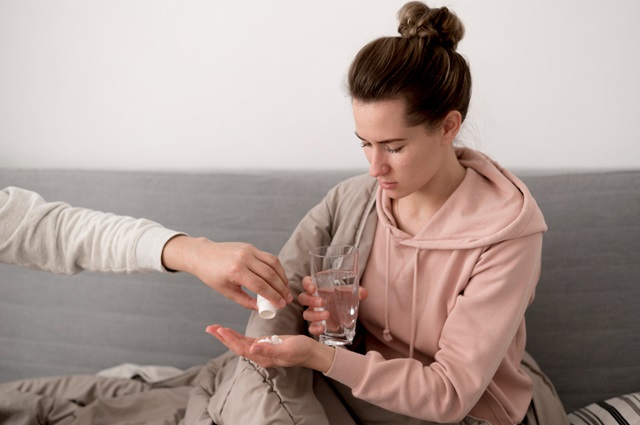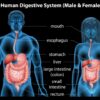It has been common to use low-dose Naltrexone to alleviate symptoms like fatigue and pain associated with chronic fatigue syndrome and fibromyalgia. Moreover, its efficacy in treating long-term COVID-19, Crohn’s disease, and multiple sclerosis is also under investigation by researchers. However, LDN should be taken safely with the knowledge of what to avoid when taking low dose naltrexone.
The medication naltrexone has been commonly used in treating opioid abuse and alcohol dependence for around 30 years. Recently, it has been found that naltrexone at low doses, roughly 1/30th of the recommended dose, might be helpful for various ailments.
We are going to discuss the advantages and applications of low-dose naltrexone for ailments like chronic fatigue syndrome, fibromyalgia, and more. We are also going to explore what to avoid when taking low dose naltrexone and the adverse consequences of LDN treatment.
How to Take Naltrexone?
Naltrexone is globally available in two forms, 50 mg oral tablet and 380 mg intramuscular(IM) injection. People take Naltrexone at their convenience. However, healthcare professionals advise people to take Naltrexone through intramuscular injection even though this process is more painful. These are the two main reasons behind choosing IM injection:
- The effects of oral tablets last only for a few days. However, the effects of Naltrexone can last up to 1 month if taken using IM injection. This can prove to be quite helpful for those patients who forget to take medicines frequently.
- IM injection is usually preferred for patients who cannot swallow oral tablets.
Function of Low-dose Naltrexone
Naltrexone is found to inhibit the adverse effects of alcohol and opiate painkillers at a typical dosage of 50 to 100 mg. It functions by sticking to endorphin and opioid receptors, blocking the binding of the chemicals that make you feel good found in alcohol and opioids.
The exact mechanism by which lower dosages of naltrexone alleviate chronic fatigue syndrome, fibromyalgia, and maybe other ailments is yet unknown to researchers. However, the possible ways are as follows:
- LDN suppresses particular proteins that trigger fibromyalgia and chronic fatigue syndrome symptoms inside the nervous system, the body’s main control and communication mechanism.
- LDN functions as an anti-inflammatory, therefore mitigating swelling or inflammation inside the neurological system.
- LDN may affect immune system-related disorders because it maintains the immune system’s homeostasis, which guards the body against dangerous intruders.
- LDN causes the production of endorphins, the body’s natural analgesics, and momentarily inhibits pain-associated receptors.
To ensure that LDN works well for your body without causing harm, it is vital to know what to avoid when taking low dose naltrexone.
What Are the Uses of Low-Dose Naltrexone?
When used in low doses, Naltrexone can prove to be effective in conditions like chronic fatigue syndrome and fibromyalgia. The following is more about the uses of low-dose Naltrexone:
Chronic Fatigue Syndrome
The chronic fatigue syndrome is also referred to as myalgic encephalomyelitis. The common symptoms of the condition are restless sleep, deep weariness, intolerance to exercise, and brain fog (neurological issue). The different cases of chronic fatigue syndromes are as distinctive as their different symptoms and severities.
Off-label LDN prescriptions are occasionally given for chronic fatigue syndrome. There is mounting proof demonstrating that some people who take LDN report having fewer symptoms.
It has been found that people suffering from low-dose naltrexone are likely to have inflammatory reactions in their brain or spinal cord, which is called neuroinflammation. It seems logical that LDN would be a useful therapy for certain people given its potential to affect nervous system inflammation.
Fibromyalgia
The symptoms of fibromyalgia, a chronic pain disorder, include exhaustion, sleep disturbances, sadness, sensitivity to the environment, and digestive issues.
It has been found that LDN may help fibromyalgia patients feel less pain and live better, but extensive research is required to confirm the findings. Despite not having FDA approval for treating fibromyalgia, LDN is occasionally administered for off-label usage.
Long COVID
When patients continue to experience the symptoms of COVID-19 for more than 12 weeks, it is referred to as long COVID.
It has been examined that long-term COVID-19 patients may safely take LDN, which may aid with the alleviation of symptoms and overall health improvement. It is critical to note that extensive research will be required to fully understand how LDN functions in patients with this illness.
Multiple Sclerosis
An autoimmune disorder known as multiple sclerosis occurs when the immune system of the body unintentionally targets the outer barrier of specific nerve cells. This may result in pain, weakening of the muscles, exhaustion, and cognitive issues.
LDN may help MS patients feel less tired and have a higher quality of life. However, it is yet not possible to make any conclusions regarding the efficacy of LDN. Confirming whether LDN is a successful therapy for MS may require more investigation.
Cancer
LDN is also assumed to have anticancer effects. However, the majority of research that has demonstrated effectiveness against certain tumors has been conducted on animal models. Human interpretations of animal research are not usually reliable.
There have been conflicting results for the few studies conducted so far. Thus, further study shall be required before LDN is suggested to cancer patients as a treatment.
Crohn’s Disease
Crohn’s disease is a long-term inflammatory disorder. It affects the digestive tract’s tissues in the human body. While there is evidence that LDN can reduce the intensity of symptoms in Crohn’s disease patients, the majority of these trials were minor and the results were subjective.
Hence, it is difficult to determine whether or not LDN had any appreciable impact on the illness. It does not seem safe and tolerated to take LDN for patients with Crohn’s disease.
Other Uses
The following are some other conditions that can treated with low-dose Naltrexone:
- Gulf war syndrome
- Diabetic neuropathy
- Alzheimer’s disease
- Parkinson’s disease
- Relapsing major depressive disorder
- Autoimmune thyroid disorder
What to Avoid When Taking Low Dose Naltrexone?
Low-dose Naltrexone(LDN) contains a low risk of side effects. Mostly, these doses are mild and can not cause severe reactions in your body. However, in rare cases, some serious side effects like allergic reactions can be seen.
Commonly, the reactions occur because of using substances that are prohibited when taking LDN. Doctors recommend avoiding certain things when taking low-dose Naltrexone to minimize the potential risk of side effects:
Alcohol and Opioids:
Patients are strictly instructed to refrain from consuming alcohol and opioids from the beginning of their Naltrexone treatment until the next 7-10 days. Patients starting to take LDN doses should avoid alcohol and opioids for a certain period.
Starting the LDN journey while still taking opioids and alcohol can be a reason for withdrawal symptoms in a patient’s body. These symptoms majorly include:
- Fever
- Sleeplessness.
- Anxiety
- Flu-like symptoms
- Sweating
- Nausea and vomiting
- Hot or cold flushes.
- Muscle pain and twitches
- Nausea and vomiting.
- Diarrhea
- Stomach ache.
Certain medications:
Some common drugs contain opioids and alcohol, therefore patients should avoid them when taking LDN. Examples include:
- Opioids such as hydrocodone, oxycodone, codeine, fentanyl, and tramadol
- Medications for coughs and colds include Phenergan or Promethazine, and
- Antidiarrheal medications.
With the right knowledge of what to avoid when taking low dose naltrexone, you can enjoy the safe benefits of it.
Takeaway!
For many people with chronic conditions, low-dose naltrexone is an appealing option, if not a miracle cure. However, there are undoubtedly risks involved.
It’s important to be open and truthful with your doctor about any drug use or other concerns that could affect your health and well-being if low-dose Naltrexone is the only thing that can help you recover.
Make sure to know what to avoid when taking low dose naltrexone avoid things prohibited by the doctor and stay consistent with your dose.
What happens if I drink alcohol while taking Naltrexone?
Naltrexone reduces the euphoric effects of alcohol. Thus, individuals may consume more alcohol to have the same effect. This increases the chances of overdosing.
Is it possible to overdose on Naltrexone?
No. Pharmacists created naltrexone to ensure that patients cannot overdose on it. Also, patients must not know what to avoid when taking low-dose naltrexone to avoid issues.
What to avoid when taking low dose Naltrexone?
Avoid consuming alcohol and opioids when taking low-dose Naltrexone.
Can I take LDN with an empty stomach?
It is not advised to take LDN with an empty stomach. Some people may experience nausea, but taking LDA after having a meal can reduce the chances of nausea.
What are the possible side effects of LDN?
LDN side effects are rare and often minor. Reported side effects of LDN include the following:
Difficulty in sleeping
Nightmares
Unusual dreams
Nausea
Weight loss
Prolonged erections
Headaches










